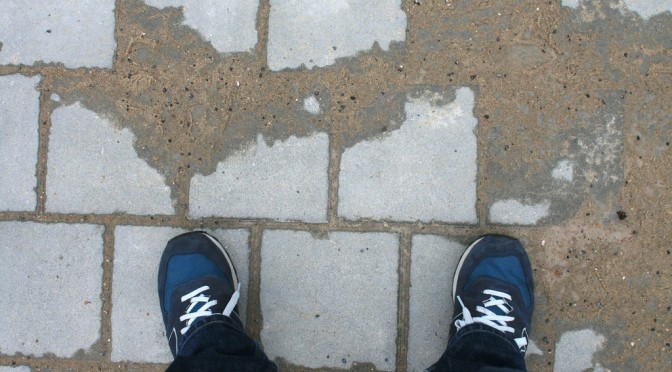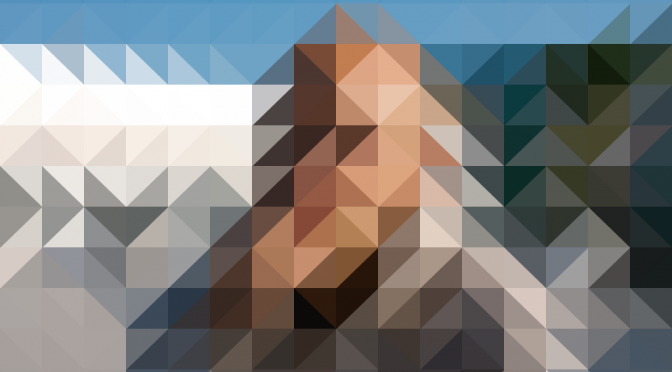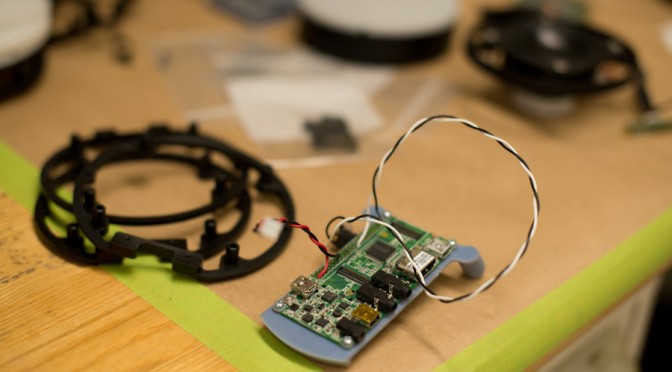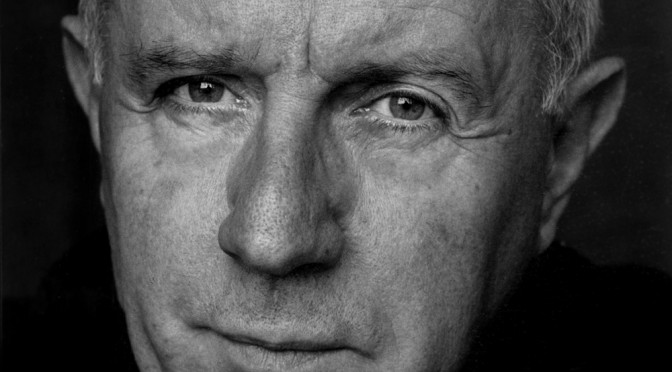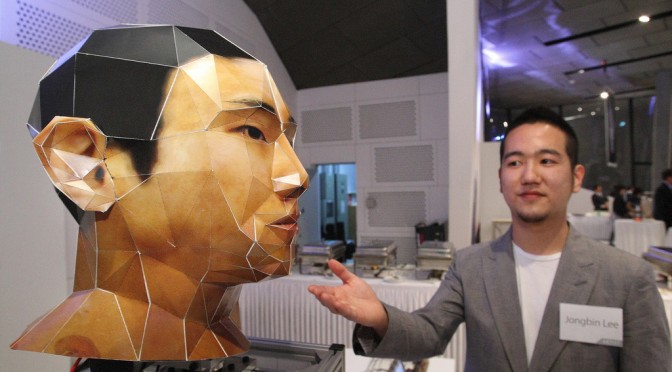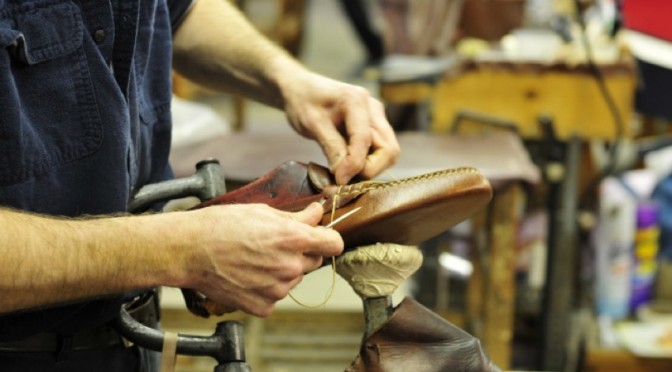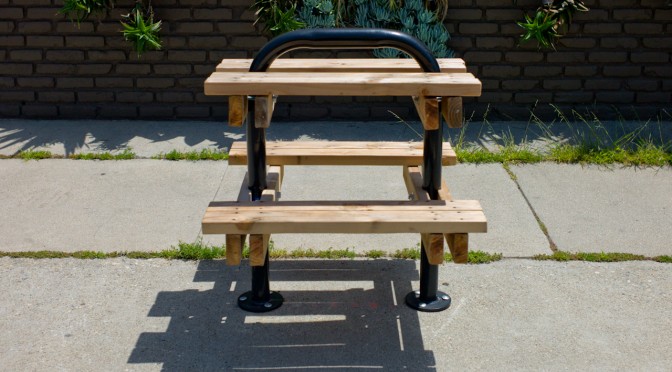(Nick wrote this over on his blog. It deserves more blogginess, so I’m re-blogging it here as well. – Julian)
The New Aesthetic. People are all over this one. It’s Bridle’s baby and a worthwhile endeavour it is too. The main issue with the New Aesthetic appears to be in defining it, and a swathe of heavyweights have stepped up to give their view. Rather than join them, I want to try and frame the New Aesthetic a little, give it some context perhaps.
So what do we know?
The New Aesthetic is a crowd generated lucky dip in the shape of a tumblr. Some of the content makes sense and some of it doesn’t, but there’s enough there to make out a theme: machine intervention. From pixellated architecture (which might have simply been considered mosaics prior to the New Aesthetic tag) to glitch-laden pop promos, there’s the whiff of technology about all of it. But in order to understand the art (if that’s what it is), perhaps we need to understand the artists.
I work in San Francisco, at the heart of the new technology revolution. Everywhere one turns there’s a feisty startup, technology hot-house, or band of programmers hunting for a VC. In a very real sense this place is where the future is being made. One could expect to see folks in Cardin costumes, zipping around on neon bedecked segways through some proto-Tron grid. But no, the people crafting the future aren’t ‘futuristic’ in any tangible sense. The futurists I know are more interested in hearty pies, farmer’s markets, fine wines, old bicycles, hand-made clothes, leather shoes and hard-backed books. The futurists are retronauts. This isn’t solely a San Francisco phenomenon. From London to New York and beyond, one cannot fail to notice the rapid growth of heritage manufacture, and a diet of artisanal bread, heirloom tomatoes and fine-tuned coffee have fueled a growing obsession with with the old. Not the old per se, but a version thereof, a simulacrum even. The ‘Olde’. This has led to an emerging paradox in the world of objects. We love the perfection, modernity and reliable consistency of our iThings, but we also feel the need to pop them into a handmade leather pouch.
In case any of you are unsure what I mean, take a look at this: fuckyeahmadeinusa
Some of these little movies are lovely, but watch five or six of them and it’s clear that there’s a strong thread of values running throughout. The delivery aesthetic is also consistent: the short focal length; the folksy soundtrack; the slow tracking shots; the gnarled old signs; the well worn tools – they’re all there. If ever there was a well defined current aesthetic, it’s this. The Olde Aesthetic is organic, it’s slow, it’s irregular, it’s ethical. The Olde Aesthetic is worthy, has longevity, has heritage. The Olde Aesthetic is expensive.
Speaking of expensive, a lot of brouhaha has been made of the recent sale of Instagram to facebook, much of which has focused on the addition of filters to make photos appear older, as if taken with a classic camera from a bygone era. Nostalgia aside, a level of imperfection is becoming a noticeable focus in design. The creation of something consistent, elegant and ‘perfect’ is no longer as much of a manufacturing challenge as it once was. Somewhat counter-intuitively, signs of human intervention are now increasingly difficult to achieve in the era of mass automation. As a result, people are becoming numb to technological perfection and are increasingly seeking out products which evidence the skill and actions of a human, with all the associated flaws, faults and individuality.
In the world of digital products quality means consistency. If paint colors don’t match, if fit and finish is misaligned, if the product functions differently to it’s neighbor, the product is considered a failure and is dispatched to a waiting dumpster (or more likely shipped off to a grey market street seller). The same is true of digital content. Consistency is king across platforms, applications and operating systems. Tools are put in place to achieve this very goal.
But let’s look at the finer things in life, those RedWing boots, heritage style clothes, fine food, furniture and bicycles. Signs of mass production, consistency and homogeneity are undesirable in these products. The movies of the Olde Aesthetic fetishize the machines used in production, but also feature loving portraits of the wise old owls who operate them. Contrast this with the dustmasked anonymity of the Foxconn workers, tethered to their machines producing a blur of cookie cutter devices. Perhaps futurists need to live in the Olde Aesthetic in order to more clearly visualise, synthesize and ultimately understand the New Aesthetic? Perhaps the Olde Aesthetic has arisen as a counter to the reliable fast-food repetitiveness of the digital world? Perhaps the comfort of an Olde Aesthetic life leads to better clarity of thought when considering the future? Maybe they should remain polar opposites, but I think it’s important to understand potential overlaps in the Venn.
When the team at Apple signed the inside of the casing of the mac plus computer they did a very powerful and emotional thing – they stated “this thing was made by people”. Whilst the signatures were etched into the injection molding tool and reproduced with the same reliable regularity of the neighboring screw bosses and air vents, it’s still one of the most beloved elements in Apple’s design history. The very notion of electronics is repetitive and binary, but the overall product experience needn’t be. Let’s be clear here, I’m not talking about personalization, widgets or custom fonts, just as I’m not talking about dropping circuit boards into hand carved teak encasements. There must be something deeper.
Back when we lived in London we arranged a regular delivery of vegetables. In that peculiarly middle class way, they arrived in a drab cardboard box, wrapped in brown paper. They were muddy, and every now and then we would find a grub. Far from complaining, it actually added to the experience, as if the reality of our position at the end of a very long production line of human beings was suddenly made evident. In a world of perfection we actively sought out imperfection, with the express intent of breaking free from the reliable, regular produce from the supermarket. In a world of machine-perfect digital objects, are there any which have grubs? Are there any digital experiences where finding the grub is actually considered a plus? Are there artisanal, organic or heirloom digital products?
If you have anything to add, I’d love to know. In Olde Aesthetic style, send your contributions not via tumblr, but by postcard: Nick Foster – 200 South Mathilda Avenue, Sunnyvale CA 94086.
